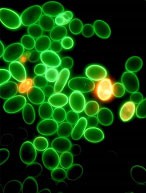STEM Advantage: Using Innovation to Make Wine

By Robert Marshall
For a year now Fisher Science Education has been educating teachers who attend National Science Teacher Association (NSTA) conferences with a hands-on science, technology, engineering and math (STEM) workshop to learn about oenology: the science of winemaking. After a brief winemaking course overview, workshop attendees visit several stations where they are immersed in specific scientific principles of the wine-making process. The aim is for these teachers to share their excitement with their students.
Biology and chemistry play major roles in oenology. Are the yeast cells operating in the optimal range? Why should wine makers be concerned with the solution’s chemical balance in a barrel? It is all about taste, and oenologists can tell you the questions do not stop there. If the wine is too sweet the yeast cells have not been allowed to ferment long enough. This is due to a direct correlation between the sugar concentration (brix) in the grapes and potential alcohol. On the flip side, if the wine is too sour the acidity level may be high (scientists say the pH is low), and therefore, may be detrimental to the survival of the microorganisms. And if the science of glycolysis and anaerobic respiration was not complicated enough, think about the scientific processes that take place even before the introduction of yeast. The climate and nutrients of the crop’s soil will change the initial quality of the grape juice before wine making even begins!
During these workshops there is something for everyone to touch. Titration, usually completed after seeing a pink indicator in a clear solution, is made possible for a red wine only by using an advanced datalogging system. For teachers unfamiliar with microbiology, they are given the opportunity, most for the first time, to use a digital microscope connected to a computer to look at commercial yeast cells. All of these tools are very exciting and worthy of the title STEM educational. It reminds us that putting innovating technologies in front of our students provides them with new and unique opportunities.
Classroom Discussion
- How could you apply the science of physics to oenology? Hint: How might hydrophobic yeast cells affect the homogeneity of a mixture?
- What other scientific investigations could you use titration and digital microscopy for other than oenology?